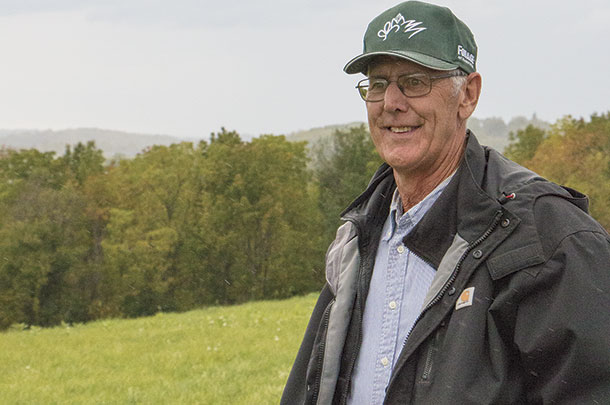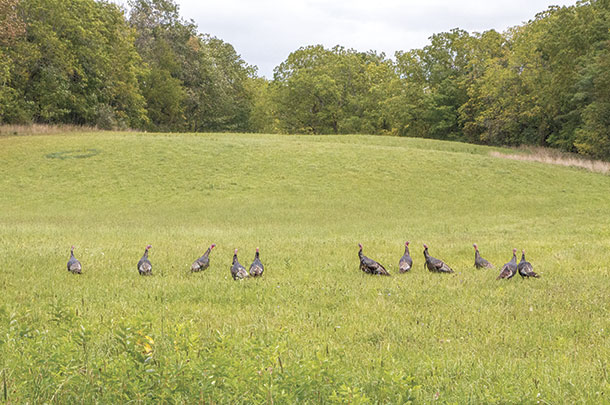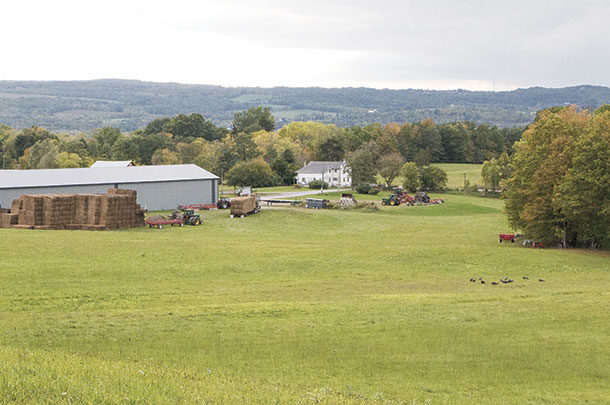Knight Farm is preparing to enter its 52nd season, and in that time it has evolved to meet the demands of an ever-changing industry.
This 2,000-acre farm is located in prime hay-growing country in the Finger Lakes region of New York. Knight is a first-generation farmer and, since childhood, he was drawn to farming. While in high school, some land came available, and he jumped on the opportunity. In the subsequent years, Knight and his brother, Ed, have farmed that land and consolidated 47 smaller farms into the operation.

Knight says, “While some people might think these larger farms are a problem, I definitely don’t look at it that way. People in production agriculture only represent 1 percent of the population. Only 1 percent do what I do – what I am best at. The other 99 percent get to do whatever they are best at. When that is the case, only the sky is the limit on what we can all achieve.”
Developing relationships
Early on, the farm grew hay and small grains. As opportunities arose, they adapted to a specific market and a customer that, at times, can be hard to please: the racehorse. Their hay dealer specializes in the high-end horse market and sells hay to major horse racetracks, including the Triple Crown races. Knight jokingly says, “Our only real claim to fame is: The Triple Crown winner may have eaten or slept on our hay.”
Joking aside, meeting the needs of these top-notch horse breeders has required innovation. Knight says one of the major hurdles can be educating the customer on the product but, at the same time, being willing to adapt to their needs. This was the case when Knight Farm changed from small bales to 3x3 bales.
At first some customers were hesitant, but for many horse stables, the change has proven a real time-saver. Knight Farm also began pressing hay to meet the need of another customer. Listening to needs and responding has set Knight Farm apart from its competitors.
Knight says, “At the end of the day, our business comes down to relationships. You need to develop relationships with the people who need your product, and you need to be a partner in their business. What you say you are going to do, you’ve got to do. All the while providing a high-quality product.” That attitude has led Knight Farm hay to ship all over the world – something that still baffles Richard Knight.
It’s not just horses for Knight Farm either. As the dairy industry expanded in their region, they saw a good opportunity for another market. While timothy and orchardgrass hay don’t seem like typical “dairy hays,” Knight Farm’s grass hay has proven its worth to the cows. Knight says, “Dairy farmers are good at growing high-quality silage. Adding our grass hay into the ration provides a good buffer for those cows.”

And back to relationships, that’s one area, Knight says you have to adapt to: “The dairy customer is different, much different, than the horse customer.”
Unique labor force
An inconsistent agricultural labor force plagues the industry, but that is one problem Knight Farm has found a way to skirt around. Their labor force is made up of a unique demographic of people – retirees. Aside from farming, Knight is also a ski instructor, and he found a lot of his fellow slope-goers (the retired ones) were looking for something to do in the summer other than golf.
With the proposal of farming in front of them, many have taken on a second career in agriculture working for Knight Farm. The oldest summer employee is well into his 80s. Knight says, “Technology has really worked to our advantage when it comes to labor. Years ago, we relied on a crew of 12 with self-propelled stack wagons and small bales. Today, we have two large square balers, five people, and we do 50 percent more hay in the same amount of time.”
When asked about the equipment they use, Knight just laughs and says, “We have a great John Deere dealership and a great Case IH dealership. We buy both, and both make good equipment. The guys may have preferences on ‘their’ tractors but I just like quality equipment.”
Educating the public
In the 50-plus years since Knight Farm came into existence, the public perception of agriculture has changed. Knight sees the shift continue with each generation removed from agriculture. He calls it “neighbor relations,” or what might be dubbed “public education,” as his responsibility. He says, “Despite living in a rural area, people are going to complain about the equipment on the road and the 16-hour days, and that might never change, but on a larger scale I feel like the political pressures from the EPA and our state environmental group has softened as we have brought awareness. They are beginning to see farmers really are the best stewards of the land.”
It would be pretty hard to argue Richard Knight and Knight Farm are not the best stewards of their land. As their operation has grown and adapted over the years, they have created a farm that meets the needs of customers and provides a great model for a future farmer. And at the end of the day, Knight says, “God has given me the greatest office to work out of – my piece of the great outdoors. I have never gotten tired of the smell of hay curing and pray I never will.”
Knight Farm – a model of innovation. ![]()
PHOTO 1: A first-generation farmer, Richard Knight has consolidated 47 farms into one unit.
PHOTO 2: Richard Knight
PHOTO 3: A flock of wild turkeys has made its home on a timothy field on the Knight Farm. Photos by Lynn Jaynes.
Erica Louder is a freelance writer based in Idaho. Email Erica Louder.











